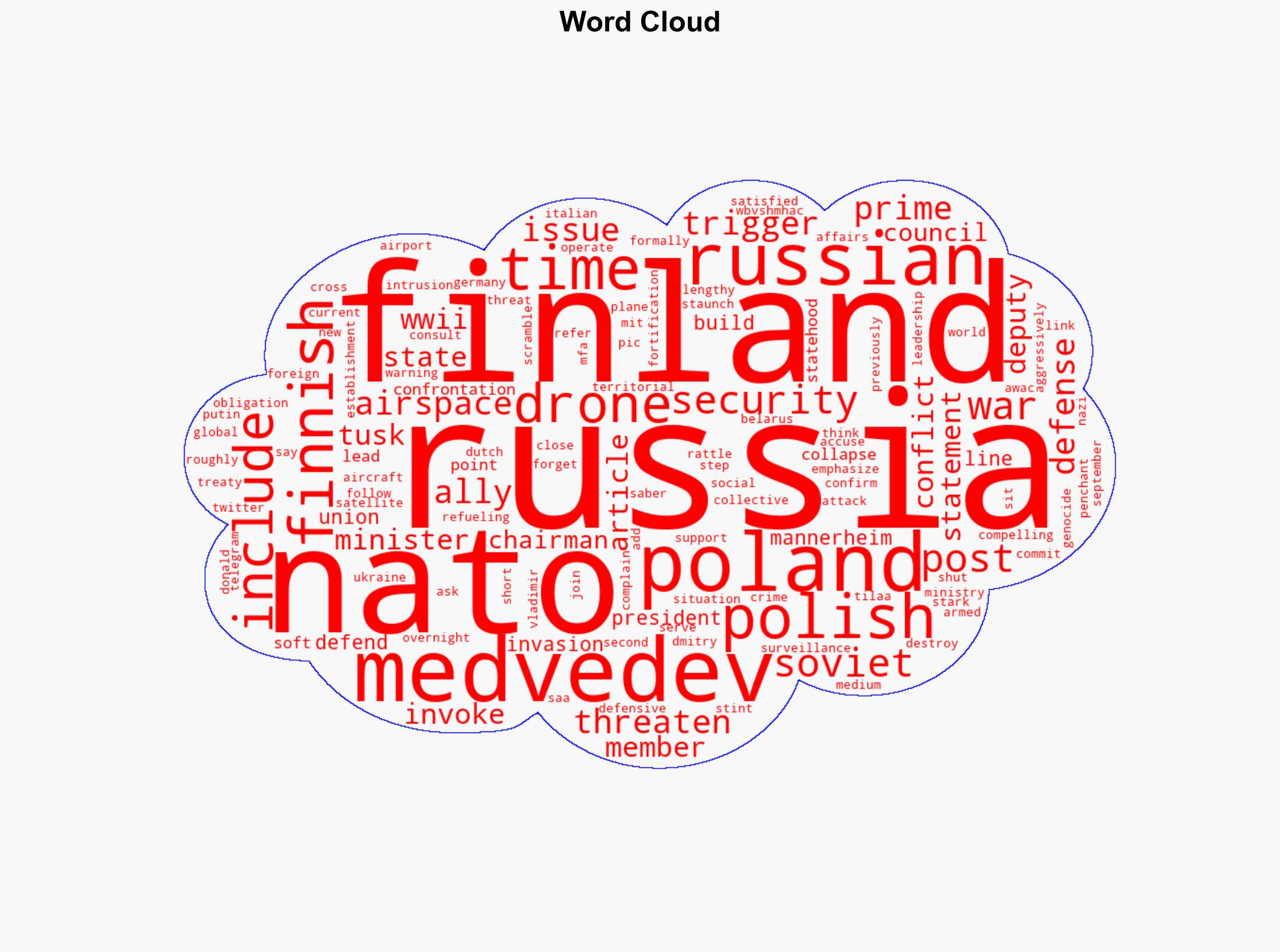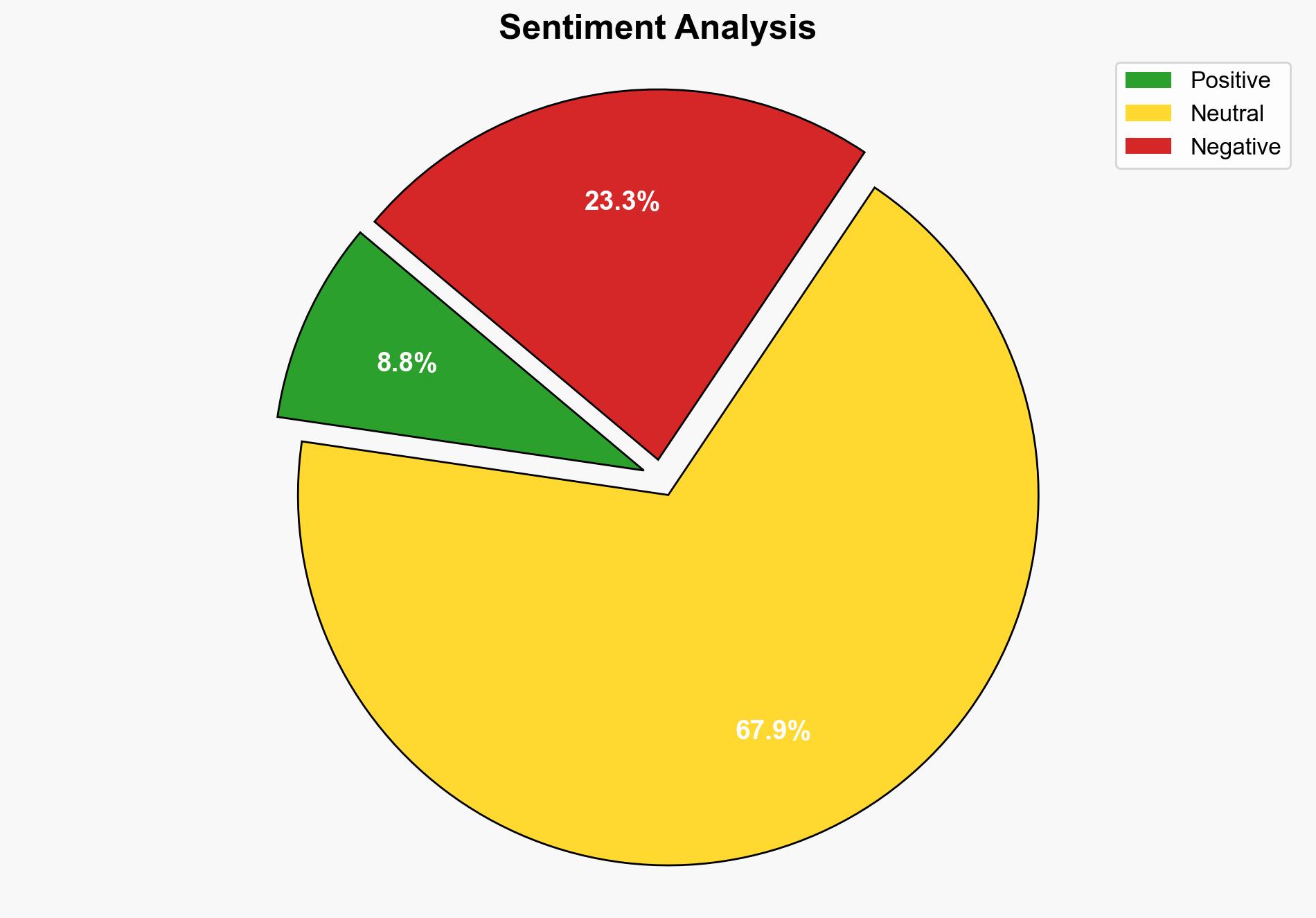Russia Follows Up Drone Attack on Poland by Threatening to Destroy Finland – Mediaite
Published on: 2025-09-11
Intelligence Report: Russia Follows Up Drone Attack on Poland by Threatening to Destroy Finland – Mediaite
1. BLUF (Bottom Line Up Front)
The most supported hypothesis is that Russia’s actions and rhetoric are primarily aimed at testing NATO’s response and cohesion. This hypothesis is supported by the strategic pattern of provocations and the historical context of Russian tactics. The confidence level is moderate due to the complexity of geopolitical dynamics. It is recommended that NATO enhance its defensive posture and diplomatic engagement to deter further escalation.
2. Competing Hypotheses
Hypothesis 1: Russia’s threats and drone activities are strategic provocations designed to test NATO’s response and unity. This hypothesis is supported by the pattern of Russian provocations and historical use of aggressive rhetoric to gauge Western reactions.
Hypothesis 2: Russia’s actions are primarily driven by internal political dynamics, using external threats to consolidate domestic support and distract from internal issues. This is supported by the timing of the threats and the use of historical narratives to rally nationalistic sentiments.
3. Key Assumptions and Red Flags
– Assumption: Russia is rational and seeks to avoid direct military conflict with NATO.
– Red Flag: The invocation of WWII narratives could indicate a willingness to escalate beyond typical saber-rattling.
– Blind Spot: The potential for miscalculation or unintended escalation due to misinterpretation of signals by either side.
4. Implications and Strategic Risks
The situation poses risks of military escalation, particularly if miscommunications occur. Economically, increased tensions could impact regional markets and energy supplies. Cyber threats may also increase as part of hybrid warfare tactics. Geopolitically, NATO’s cohesion and response will be tested, affecting global alliances and security structures.
5. Recommendations and Outlook
- Enhance NATO’s defensive readiness and conduct joint exercises to demonstrate unity and deterrence capability.
- Engage in diplomatic channels with Russia to de-escalate tensions and clarify intentions.
- Scenario Projections:
- Best Case: Diplomatic engagement leads to de-escalation and a return to status quo.
- Worst Case: Miscalculations lead to military conflict involving NATO members.
- Most Likely: Continued provocations with limited military engagement, maintaining a tense but controlled situation.
6. Key Individuals and Entities
– Dmitry Medvedev
– Donald Tusk
– Russian Ministry of Foreign Affairs
7. Thematic Tags
national security threats, cybersecurity, counter-terrorism, regional focus




